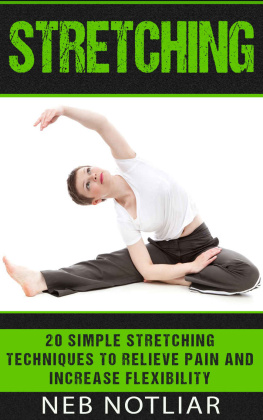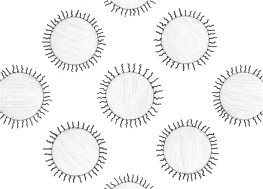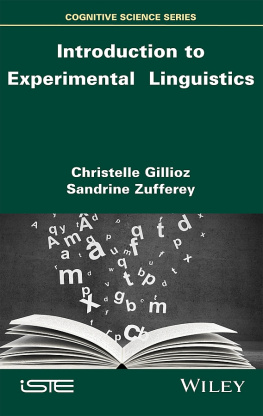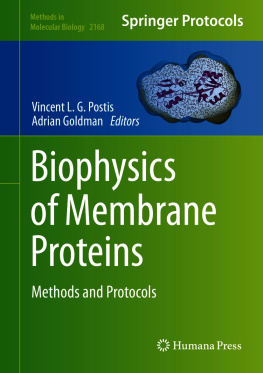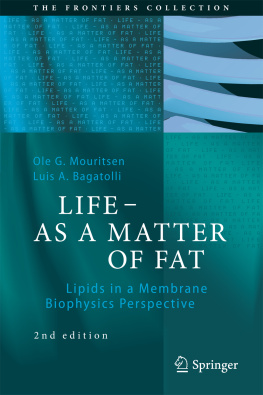CONTENTS
Page List
Guide

Biophysics
TOOLS AND TECHNIQUES
Biophysics
TOOLS AND TECHNIQUES
Mark C. Leake

CRC Press
Taylor & Francis Group
6000 Broken Sound Parkway NW, Suite 300
Boca Raton, FL 33487-2742
2016 by Taylor & Francis Group, LLC
CRC Press is an imprint of Taylor & Francis Group, an Informa business
No claim to original U.S. Government works
Printed on acid-free paper
Version Date: 20160125
International Standard Book Number-13: 978-1-4987-0243-0 (Paperback)
This book contains information obtained from authentic and highly regarded sources. Reasonable efforts have been made to publish reliable data and information, but the author and publisher cannot assume responsibility for the validity of all materials or the consequences of their use. The authors and publishers have attempted to trace the copyright holders of all material reproduced in this publication and apologize to copyright holders if permission to publish in this form has not been obtained. If any copyright material has not been acknowledged please write and let us know so we may rectify in any future reprint.
Except as permitted under U.S. Copyright Law, no part of this book may be reprinted, reproduced, transmitted, or utilized in any form by any electronic, mechanical, or other means, now known or hereafter invented, including photocopying, microfilming, and recording, or in any information storage or retrieval system, without written permission from the publishers.
For permission to photocopy or use material electronically from this work, please access www.copyright.com (http://www.copyright.com/) or contact the Copyright Clearance Center, Inc. (CCC), 222 Rosewood Drive, Danvers, MA 01923, 978-750-8400. CCC is a not-for-profit organization that provides licenses and registration for a variety of users. For organizations that have been granted a photocopy license by the CCC, a separate system of payment has been arranged.
Trademark Notice: Product or corporate names may be trademarks or registered trademarks, and are used only for identification and explanation without intent to infringe.
Library of Congress Cataloging-in-Publication Data
Names: Leake, Mark C., author.
Title: Biophysics : tools and techniques / Mark C. Leake.
Description: Boca Raton, FL : CRC Press, Taylor & Francis Group, [2016] | 2016 | Includes bibliographical references and index.
Identifiers: LCCN 2016000625| ISBN 9781498702430 (alk. paper) | ISBN 1498702430 (alk. paper)
Subjects: LCSH: Biophysics--Textbooks.
Classification: LCC QH505 .L352 2016 | DDC 612/.014--dc23
LC record available at http://lccn.loc.gov/2016000625
Visit the Taylor & Francis Web site at
http://www.taylorandfrancis.com
and the CRC Press Web site at
http://www.crcpress.com
Dedicated, with great affection, for their trust, support, and genuine patience, to Athe yang to my yin, and Cthe pong to my ping.
And, of course, to Mr. Blue Sky.
Contents
Or, how physical science methods help us understand life
And the whole is greater than the part.
Euclid elements, Book I, Common Notion 5, ca. 300 BC
This book concerns one simple question:
What is life?
If only the answer were as simple! In this book, you will find a comprehensive discussion of the experimental and theoretical tools and techniques of biophysics, which can be used to help us address that most innocuous questions.
Interdisciplinary research between the physical and biological sciences is now emerging as one of the fastest growing fields within both the physical and biosciencesa typical search for biophysics in any major Internet search engine now generates several million hits. The trend toward greater investment in this interfacial area is reflected in the establishment of centers of excellence across the world dedicated to interdisciplinary science research and graduate student training that combine elements of both the physical and life sciences. Biophysics/biological physics is now a standard taught component option in undergraduate biochemistry and physics courses, and the significant direction of change over the past few years in terms of research direction has been a shift toward a smaller length scale and a far greater physiological realism to these highly challenging experimentsexperiments are getting better at imaging molecular processes. On the other hand, there are some theorists who feel that we need biophysical concepts and theories at higher length scales to combat the sometimes suffocating reductionism of modern biology.
Physical science methods historically have been key to providing enormous breakthroughs in our understanding of fundamental biologystemming from the early development of optical microscopy in understanding the cellular nature of life to complex structural biology techniques to elucidate the shape of vital biomolecules, including essential proteins and DNA, the coding molecule of genes. More recently, physical science developments have involved methods to study single cells in their native context at the single-molecule level, as well as providing ground-breaking developments in areas of artificial tissue bioengineering and synthetic biology, and biosensing and disease diagnosis.
This book concisely encompasses the full, modern physical science toolbox of experimental and analytical techniques that are in active use. There is an enormous demand for literature to accompany both active research and taught courses, and so there is a compelling, timely argument to produce a concise handbook summarizing the essential details in this broad field, but one which will also focus on core details of the more key areas. This book can be used to complement 3rd/4th-year undergraduate courses in physical science departments involving students who are engaged in physical/life sciences modulesthere are several of these internationally involving biological physics/biophysics, bioengineering, bionanotechnology, medical/healthcare physics, biomedical sciences, natural sciences, computational biology, and mathematical biology. Similar stage undergraduates in life sciences departments doing physical/life science interfacial courses will also benefit from this text, to accompany lectures including biophysics, bionanotechnology, systems biology, and synthetic biology. Also, PhD and masters students engaged in physical/life sciences courses and/or research will find significant utility for structuring and framing their study, and expert academics will find this an excellent concise reference source for the array of physical science tools available to tackle biological problems.
In this book I focus specifically on the purpose, the science, and the application of the physical science tools. The chapters have been written to encapsulate all tools active in current research labs, both experimental and analytical/theoretical. Bulk ensemble methods as well as single-molecule tools, and live-cell and test tube methods, are discussed, as all are different components available in the physical scientists toolbox for probing biology. Importantly, this broad material is comprehensively but concisely mapped into one single volume without neglecting too much detail or any important techniques. Theoretical sections have been written to cover intermediate and advanced ability, allowing levels of application for students with differing mathematical/computational abilities. The theory sections have been designed to contrast the experimental sections in terms of scale and focus. We need theories to interpret experimental techniques, but we also need theories to understand more general questions around evolution, robustness, nonequilibrium systems, etc., and these are not tied to molecular scales.





